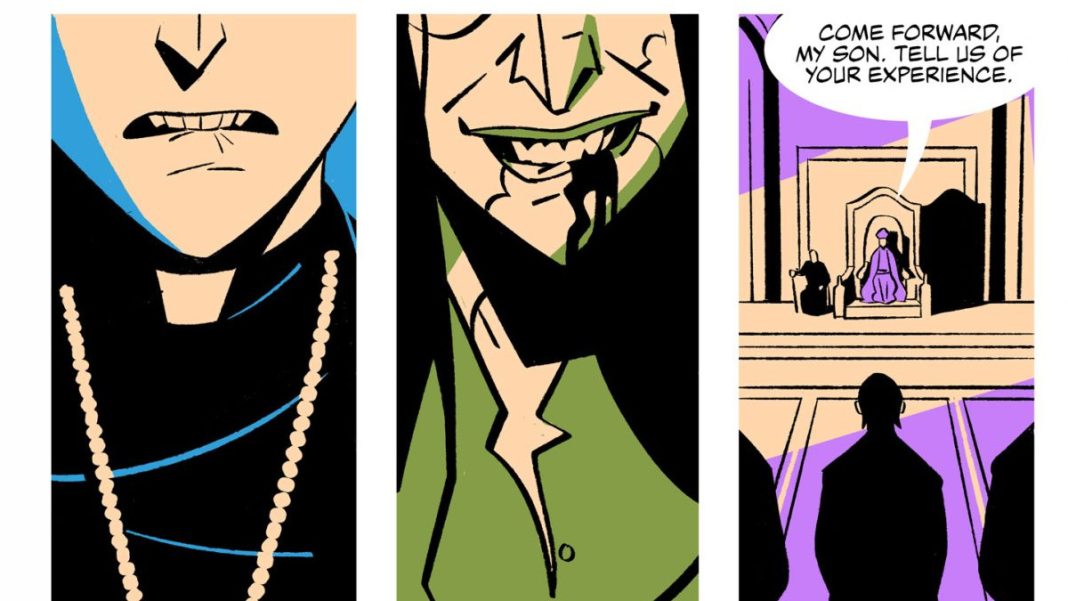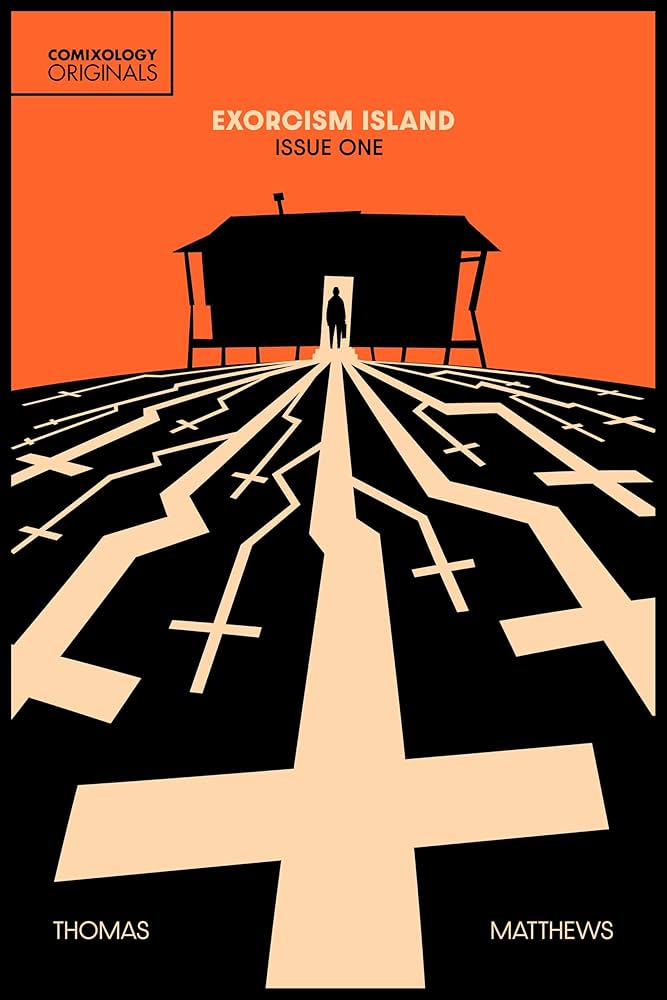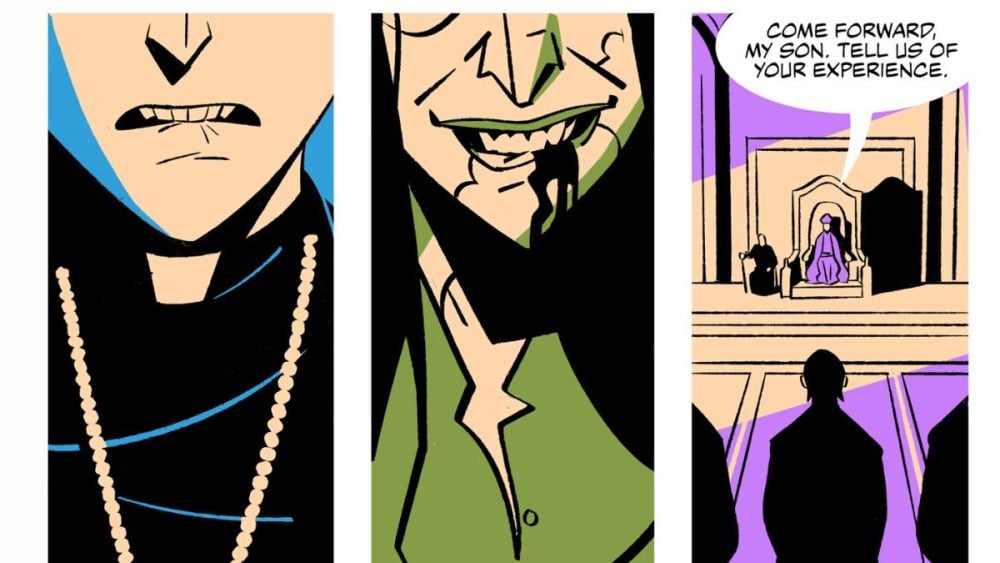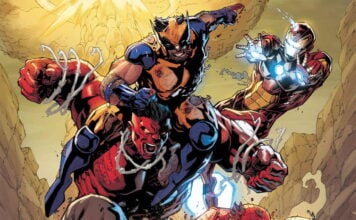Sometimes more is better. Author Jordan Thomas and illustrator Chris Matthews seem to agree with this sentiment as their new Comixology series Exorcism Island sees the Church put their toughest active possession cases together, in an island, for some no-holds barred exorcism sessions. It’s a curious concept that finds traces of Lost, The Expendables, and good old fashioned p ossession movies in its formulation.
The story follows Father Gigi Amato, a priest that’s sent to a Caribbean island to join a group of exorcists as they tackle the most resistant demons in their case logs. Amato is processing a previous encounter that seemingly left more than a mark on his psyche. Upon arrival, he gets a crash course on what a difficult possession looks like. Constant streams of insults, escape attempts, and violent outbursts speak to a job that’s not for the faint of heart or for those wading in doubt.
Thomas’s script is aware of the fact there’s little need to educate the reader on what an exorcist is or how an exorcism works. As such, Exorcism Island hits the ground running, eager to get Father Amato to the island to let the horror elements surrounding the location and its cursed inhabitants set the tone. This is where a bit of that Lost influence comes in. Characters are introduced rather quickly and unceremoniously, but with a clear intent to build on their stories in future issues. This comic aims to reveal its secrets methodically and at its own pace.
Matthews’s art complements this approach well, favoring a kind of clear line style that accentuates body language and the parts of the scenery that more directly impact the story. This helps make each priest feel distinct and easy to tell apart. Shades of The Expendables are noticeable in this regard as the priests all look like war-weary veterans that display the necessary roughness the job demands.
Matthews also colors the book, and it is quite striking how much weight he packs into each panel with no more than two colors at a time. Solid oranges dominate the first issue of this series, alluding to a kind of corrupt heat that envelops the island. Purples signal a more intimate type of fear and anxiety that brings the horrors closer to individual characters (apart from being a color associated with Catholicism), whereas sickly greens feel like strategic nods to the iconic color palette of William Friedkin’s The Exorcist.
It’s important to note that the story doesn’t come off as a glorification of religious institutions and their representatives. More purchase is given to the unfairness behind the idea of putting people in impossible situations and then expecting great results. The priests are all clear on the task’s level of difficult and how much of it is stacked against them, but there’s still that overbearing sense of responsibility hovering over them.
It asks readers to consider just how realistic it is to expect these holy men to succeed in casting demons away that have already proven to be quite stubborn in their positions. Questions on expectations, duty, and failure are brought up through these characters and they do a lot in establishing a frail sense of purpose regarding the island and its subjects.
Exorcism Island is a welcoming shakeup of the possession formula. It doesn’t rely on The Exorcist to get its story across as many stories of its kind do, letting other influences get a chance at adding to the subgenre. That Matthews and Thomas entertain this is reason enough to give the comic a chance. Add to this a veritable cast of badass exorcists and a fresh new setting for the possessed to play in and you’ve got the makings of a truly great new horror comic.













